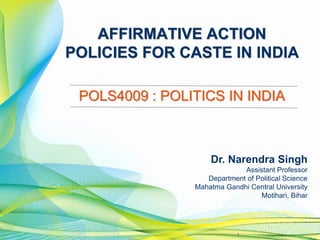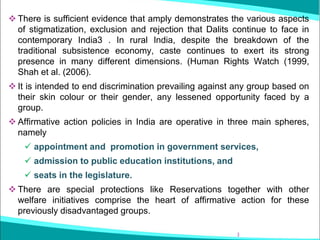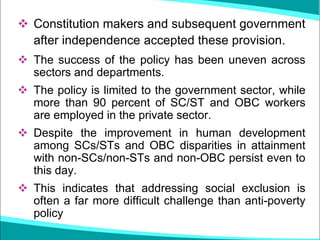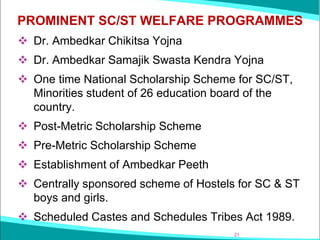This document discusses affirmative action policies for castes in India. It provides background on the caste system and historical discrimination faced by lower castes. The constitution includes provisions for affirmative action to promote equal opportunity and protect disadvantaged groups. Current policies include quotas for government jobs, education admissions, and legislative seats for Scheduled Castes, Scheduled Tribes, and Other Backward Classes. However, caste-based discrimination and disparities persist, indicating more work is needed to fully address social exclusion. The document argues that affirmative action policies aim to promote justice and should continue in order to eliminate the root causes of caste oppression in India.























